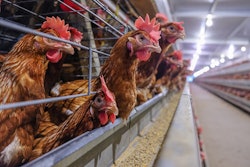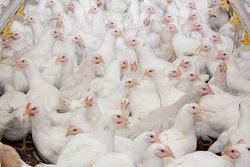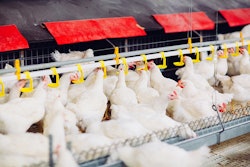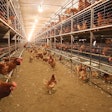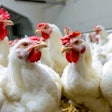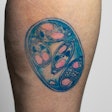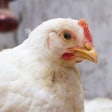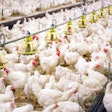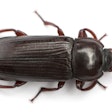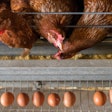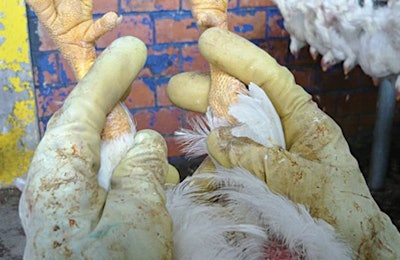
To ensure that poultry processing plants continuously operate in the most efficient way possible, plant managers must be open to change.
New technologies and ways of working may take employees outside of their comfort zone and resistance to change may be considered normal. However, a failure to change can easily lead to a plant not being as productive as it could be and losing ground to competitors who may feel more comfortable working in new ways.
There are numerous areas in poultry processing plants where tried and tested methods continue to be followed on a daily basis. Managers are failing to take advantage of the increases in productivity that employing new technologies or adopting new working methods could bring.
Handling birds
In many poultry processing plants, workers tend to hold birds by the thigh joint when hanging them on the shackles. To stop birds from escaping they are often held too tightly. This common practice can result in various degrees of bruising and damage to the legs, which leads to birds being rejected by quality control.
This damage can, however, be prevented if workers are shown how to handle birds differently.
Placing the index and middle fingers at a 90 degree angle around one side of the leg to meet with the thumb around the other – forming a ring – means that there is no need to apply direct pressure to the leg. This simple change reduces the number of bruised birds, increasing the plant’s final output.
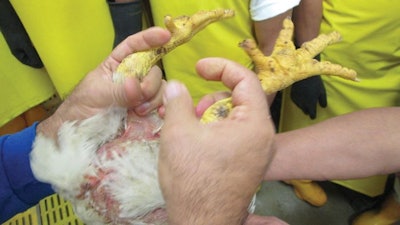
Holding broiler legs in the correct way prevents them from being harmed and will ultimately contribute to the processing plant’s yield rising. | Eduardo Cervantes López
Working with larger birds
The market for large birds has been steadily increasing over recent years and many plants now slaughter a significant number of birds with a minimum average weight of 3.0 kg.
Shackle suppliers select the correct shackle size for a plant based on the average size of birds processed; however, many plants still slaughter a minimum of two bird sizes. These may be small, i.e. under 2.2 kg, medium, with an average weight of 2.6 kg, or large, weighing over 3 kg. For each of these weights a broiler’s legs will have a different thickness.
The issues with using a standard shackle are not limited to processing different sizes of birds. While today’s birds may be relatively uniform across a flock, once hung on the shackles, any deviation from the standard becomes apparent.
Problems arise where legs may not comfortably slide to the bottom of the shackles due to being too big. This results in two direct points of contact between the shackles and the legs, rather than the shackles fitting snugly around the legs, and may result in a number of negative consequences including:
- Poor stunning
- An increased likelihood that birds may fall from the shackles during passage through the bleed tunnel
- Water turbulence in the scalder may eject birds from the tank and shackles
- Issues may arise during plucking due to birds not being firmly secured
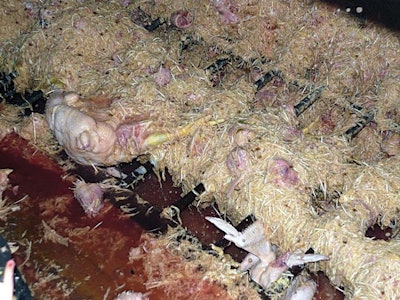
Any birds that fall to the floor during plucking will be downgraded to sub-products. | Eduardo Cervantes López
Economic consequences
All of these issues will have cost implications for the processing plant.
For example, if a bird is poorly stunned, bleed quality will be affected. In many plants, should birds fall from the shackles during passage through the bleed tunnel they cannot be returned to the processing line and should they fall into the scalding tank they will emerge cooked. Birds falling from the shackles during plucking will be sold as by-products.
The issues that arise from working with larger, or a variety of bird sizes, can be addressed by switching to expandable shackles. These allow the full entry of larger legs resulting in a reduction in lost saleable product and an overall increase in yield.
Staff training
Workers must have an understanding of both broiler anatomy and physiology and of the technology that supports processing operations. For example, bringing this understanding to plucking operations can ensure that not only is a broiler well plucked and that the carcass is not damaged but also that the life of rubber fingers is not shortened.
For many plant managers, understanding how various operations and decisions are interrelated remains a challenge; however, addressing this issue and being open to change can lead to increases in plant productivity.
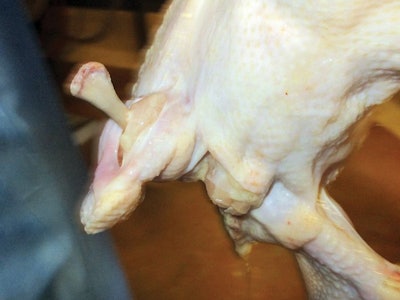
Understanding bird anatomy and physiology along with how plucking machines work can prevent issues such as dislocations arising. | Eduardo Cervantes López
Poultry processing staff key to cost and loss control
www.WATTAgNet.com/articles/39112

